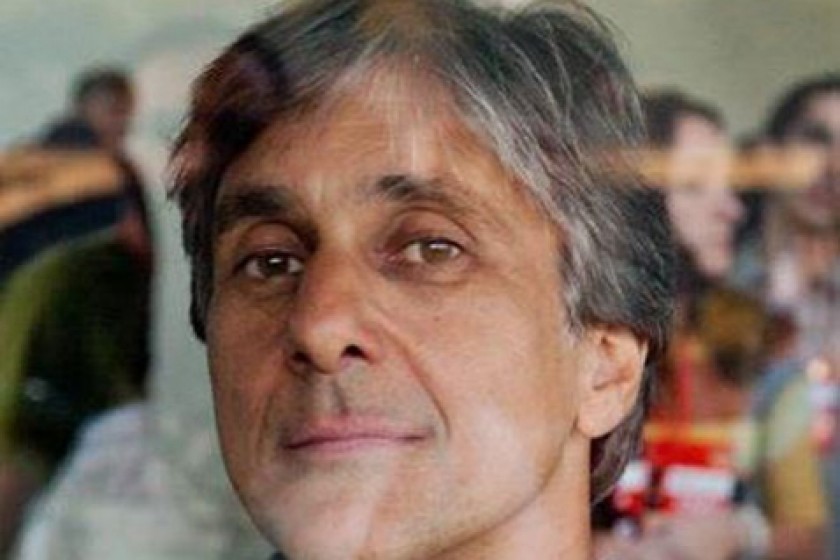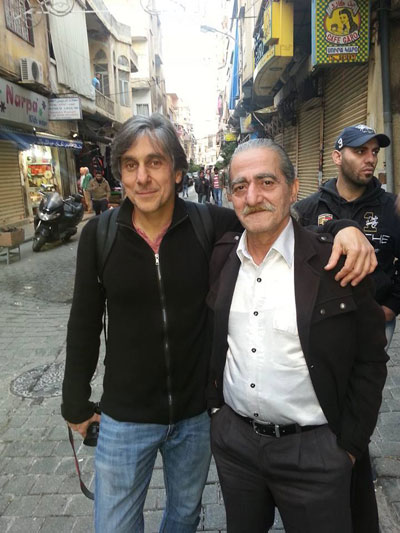
Ara Oshagan: Documenting the Plight of Syrian-Armenians in Lebanon
Having traveled to Lebanon in December, photographer Ara Oshagan is also working on a book about the Armenian community of Beirut.
“For me, Beirut is the birthplace of the diaspora, and I went there retracing the steps of that birthplace. There were two projects that I had to work on. The first was a project conceived by American- Armenian Raffi Ardaljian regarding Syrian-Armenians in the United States. The second was a personal project. I always dreamt of preparing a book about the Armenians in Lebanon. Today, Beirut is the oldest city of the diaspora. There’s Aleppo as well, but we all know what’s going on there.”
Ara Oshagan, a photographer living in Los Angeles, is a familiar name in Armenia and the diaspora. I spoke to Ara about Beirut, its past, present, and the plight of Syrian-Armenians who have fled there due to the war raging in Syria. Ara didn’t conceal his fear regarding the future of Beirut. He has a number of concerns that cross all borders. Ara speaks through his photographs. His lens conveys the experiences of what he has seen and lived, and all this will be revealed in his forthcoming book.
“I visited many families. But I interviewed six families in depth. Syrian Armenians are going through some very rough times. They are paying $300-400 a month for small apartments. Psychologically, they’re confused and adrift. They can’t go back to Syria and they don’t want to stay in Lebanon.
Why?
Because the situation in Lebanon isn’t all that good either. They are just making ends meet. Finding work in Beirut is tough. These people are caught in the middle; it’s emotionally very taxing. They don’t want to accept the situation they find themselves in. Today, Syria-Armenians are living from day to day.
And what about the situation of Lebanese-Armenians?
In Bourj Hammoud, where I spent most of my time, Armenians are also living in very small homes. Just imagine five or six people living together in such small spaces. The community has lost its former radiance.
Can you say something about the assistance programs now underway?
Yes, assistance is being provided to Syrian-Armenians but it won’t solve their problems. They need to find work and places to stay. For my research I contacted the Karageozian Foundation, which is providing important assistance to Syrian-Armenians, but it can’t solve their main problems.
How will you use the photographs you took in Lebanon?
I also video-taped much material in order to show their daily lives in greater detail - where they went and worked; if they had jobs that is. Through the videos I want to show, close-up, what Syrian-Armenians are now going through and to present this reality to Armenians back in the United States.
What can you tell us about your second project?
This is my own initiative and should prove to be quite interesting. Beirut is the beginning of the diaspora and it’s the theme of my book – the three or four generations of Armenians who lived there and who continue residing there today. Beirut, as a birthplace, holds special meaning for me.
If, let’s say, I photographed Karabakh to portray that historic land and the Armenians who live there, in this case my work will be completely devoted to Beirut, the oldest of all the diasporan communities created as a consequence of the 1915 massacres and exile. I should add that in addition to Beirut, Anjar proved very interesting, and these two areas serve as the main focus of my studies. My connection to Bourj Hammoud will also come to light in the book. The people, their daily lives, their homes, the neighborhoods and faces; you’ll find it all in my book.
What’s the procedure you follow for such a project? Do you have a set plan in advance?
 No, I don’t set out to take photos according to any plan. What I try to do is visit a place and look for what’s interesting or unique. If I find such attributes, I follow them up. For example, I went to the Sis neighborhood without any preconceived agenda. An acquaintance of mine appeared and took me to some interesting places. I felt I had to photograph these things and that’s what I did.
No, I don’t set out to take photos according to any plan. What I try to do is visit a place and look for what’s interesting or unique. If I find such attributes, I follow them up. For example, I went to the Sis neighborhood without any preconceived agenda. An acquaintance of mine appeared and took me to some interesting places. I felt I had to photograph these things and that’s what I did.
You stress that Bourj Hammoud is an interesting place. Can you explain why to our readers?
Bourj Hammoud is like a living organism. These are the words of film director Nigol Bezjian. The images there are so jumbled that it’s hard for me to describe that feeling. The faces, the people, the stores, and the hustle and bustle - how the neighborhoods are interconnected - the sounds emanating from the minarets and churches…I found it all very interesting.
It’s as if your father Vahe Oshagan is speaking.
Yes, perhaps. And it’s amazing that fifty years have passed since my father’s time in Beirut and much remains the same. What’s also surprising is that a book or a film, a piece of documentary art, hasn’t been made about Beirut. It’s unfortunate that no one has ever thought about this.
Was the time you had sufficient?
Sadly, I didn’t have the time to photograph everything. My stay was very short.
Do you visit other regions?
I really wanted to visit Antelias. I believe it’s an important center. But my time was short.
What would you like to say about Anjar?
I liken Anjar to a community under the domain of some old Armenian princely families. It’s a true Armenian village in all aspects. And the village lives by its own rules. For example, an Armenian cannot sell his land to non-Armenians. The community lives an independent existence. I found this very interesting.
(At this point in our “chat’ conversation, I sent Ara one his photos showing him with a Beirut-Armenian nicknamed ‘Kalashnikov Boghos’. He laughs and asks me where I found the photo.)
Ara, who is this guy, this hero of yours?
There are many such heroes. But ‘Kalashnikov Boghos’ is a very interesting character. He even took us to his house. I had heard about him and figured he saw some battle time. But after some questioning, I found out that Boghos is an actor and crazy about the theater. Boghos has a permanent chair opposite Café Garo in the Marash neighborhood. Everyone knows the guy. You can find him on YouTube, where he talks about various issues. He asked me to bring a bottle of Johnnie Walker Black the next time I visit Beirut. I’m sure there are other characters like him in Bourj Hammoud. And just think that these characters are the protagonists in my father’s writings. I’m sure of it.
I felt the presence of my father throughout the entire trip to Beirut. This was totally unexpected for me. The presence of Vahe Oshagan was felt at every step along the way. This feeling surfaced during my conversations with total strangers.
How so?
Everyone knew about him. When I told them that Vahe is my father a certain intimacy grew. During our conversations mention was even made about Hagop Oshagan.
But didn’t your father leave Beirut with a certain sense of dissatisfaction?
Yes I know that. I know that people didn’t buy his books. He was even persecuted. But that situation no longer exists. Now they recognize him as a teacher and an author of articles. But they aren’t familiar with Vahe Oshagan the poet. Sadly, this is the reality.
Would you ever like to live in Beirut?
That’s a tough question. It’s almost impossible to live there as a family. If I was living on my own - why not? When I was there, two bombs exploded in a southern Beirut suburb. Just imagine. Let me repeat, Beirut holds a special significance for me and I’m sure I’ll go there again.
P.S. Ara Oshagan says that he’ll be visiting Yerevan in May to launch his FATHERLAND project at NPAK (Armenian Center for Contemporary Experimental Art).
 Videos
Videos Photos
Photos
Comments (1)
Write a comment